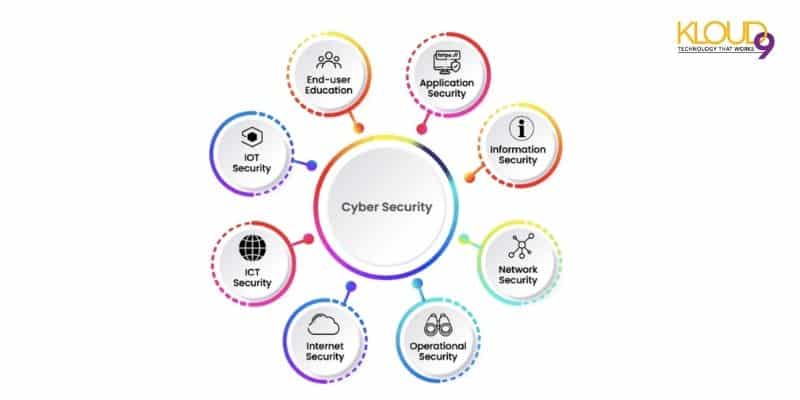In today's digital age, network security is of paramount importance. Businesses, organizations, and individuals rely heavily on networks for communication, sharing data, and accessing resources. However, this increased reliance on networks makes them prime targets for cyber threats. To safeguard your sensitive data and maintain the integrity of your network, it is crucial to implement robust network security practices. This article will explore the best practices for ensuring top-notch network security, helping you stay one step ahead of cybercriminals.
Understanding the Network Security Landscape
Before diving into specific security practices, it is essential to have a comprehensive understanding of the network security landscape. Network security encompasses various technologies, policies, and procedures designed to protect the confidentiality, integrity, and availability of data and resources within a network.
- Protecting Confidential Information: Networks often contain sensitive information, such as customer data, financial records, and proprietary business data. A breach can lead to data theft or exposure, which can have legal, financial, and reputational consequences.
- Maintaining Business Continuity: Downtime resulting from a network breach can be costly. In addition to financial losses, it can lead to a loss of productivity and customer trust. Network security measures help ensure that your network remains available and operational.
- Preserving Reputation: A security breach can damage your organization's reputation. Customers and partners may need more trust in your ability to protect their data. This can result in a loss of business and credibility.
Best Practices for Ensuring Network Security
Now that we understand the importance of network security, let us delve into the best practices for safeguarding your network.
1. Conduct Regular Security Audits
One of the first steps in enhancing network security is to conduct regular security audits. These audits help identify vulnerabilities and weaknesses in your network infrastructure. Consider hiring a professional penetration testing team to simulate cyberattacks and assess your network's resilience. Regular audits enable you to address security gaps before malicious actors exploit them proactively.
2. Keep Software and Firmware Updated
Outdated software and firmware are common entry points for cybercriminals. Vendors release updates and patches to fix security vulnerabilities. Keeping your operating systems, applications, and network devices up-to-date can reduce the risk of exploitation through known vulnerabilities.
3. Implement Strong Access Control
Access control grants or denies access to network resources based on user credentials and permissions. Implementing robust access control mechanisms is essential for preventing unauthorized access to sensitive data. This can include user authentication, role-based access control, and the principle of least privilege, which ensures that users only have access to the resources necessary for their job.
4. Use Encryption
Encryption is a fundamental tool for protecting data in transit and at rest. Implementing encryption protocols, such as SSL/TLS for data transmission and encryption for stored data, ensures that even if attackers gain access to your network, they cannot decipher the data without the encryption keys.
5. Educate and Train Employees
Human error remains one of the leading causes of security breaches. Ensure your employees know security best practices, such as creating strong passwords, recognizing phishing attempts, and following company policies. Regular security training can significantly reduce the risk of internal security incidents.
6. Implement a Firewall
Firewalls act as a barrier between your network and potential threats from the internet. They filter incoming and outgoing network traffic based on predefined security rules. A well-configured firewall helps block malicious traffic and unauthorized access attempts.
7. Enable Intrusion Detection and Prevention Systems (IDPS)
Intrusion Detection and Prevention Systems (IDPS) continuously monitor network traffic for suspicious activity and known attack patterns. They can automatically block or mitigate threats in real time, helping to prevent breaches before they occur.
8. Back-Up Data Regularly
Data loss can result from various factors, including cyberattacks, hardware failures, and natural disasters. Regularly backing up your data, on-site and off-site, ensures you can recover quickly during data loss or a ransomware attack.
9. Create an Incident Response Plan
Despite your best efforts, security incidents may still occur. Having a well-defined incident response plan can make all the difference in minimizing the impact of a breach. Ensure your team knows how to respond, whom to contact, and what steps to take to contain and investigate the incident.
10. Monitor Network Traffic
Continuous monitoring of network traffic allows you to detect anomalies and potential security threats in real time. Implementing network monitoring tools can provide insights into network behavior and help identify unusual patterns that may indicate an ongoing attack.
11. Segment Your Network
Network segmentation involves dividing your network into smaller, isolated segments. This practice limits the lateral movement of attackers within your network if they breach one segment. It also helps contain and isolate security incidents.
12. Employ Multi-Factor Authentication (MFA)
Multi-factor authentication (MFA) adds a layer of security by requiring users to provide multiple forms of authentication, such as a password and a one-time code sent to their mobile device. MFA makes it significantly harder for attackers to gain unauthorized access to accounts and systems.
13. Regularly Review and Update Security Policies
Security policies and procedures should evolve to address emerging threats and changes in technology. Regularly review and update your security policies to remain effective and relevant.
Conclusion
Network security is a continuous and evolving effort in today's digital landscape. Cyber threats are constantly evolving, and attackers are becoming increasingly sophisticated. Therefore, staying vigilant and proactive in protecting your network and data is crucial.
You can significantly enhance your network security posture by following the best practices outlined in this article. Regular security audits, software updates, strong access control, encryption, employee education, and implementing security tools such as firewalls and IDPS are all essential components of a robust network security strategy.
Remember that network security is not a one-time task but an ongoing commitment to protecting your organization's data and reputation. By prioritizing network security and staying informed about the latest threats and countermeasures, you can build and maintain a top-notch network security infrastructure that defends against even the most determined adversaries.





You must be logged in to post a comment.